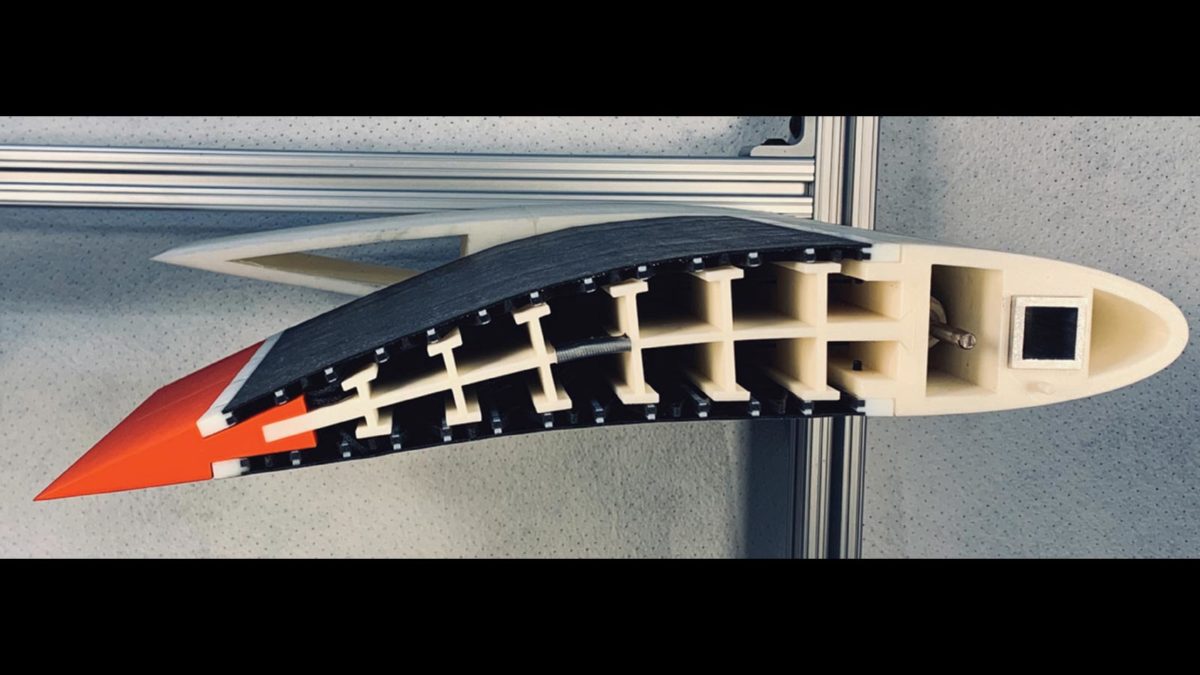Inspired by fish
By Christine Fisher|February 2020
Researchers at the University of Maryland have devised a wing section whose camber, or curvature, can be morphed by bending a fish-inspired skeleton core.
Today’s aircraft adjust their camber by extending or retracting ailerons and flaps. The gaps between these surfaces and the wing create drag, and because these control surfaces are rigid, the camber cannot be adjusted as precisely as might be possible with the new method.
The origins of this bioinspired concept can be traced to work done nearly a decade ago by Benjamin Woods, then a doctoral student at the University of Maryland and now a lecturer at the University of Bristol in the United Kingdom. He devised the FishBAC, short for Fish Bone Active Camber.
“The idea was to have a flexure to do the bending and get the camber and have the spines go off to create the shape you would need for the airfoil surface,” explains Norman Wereley, the University of Maryland professor whom Woods studied under and who is now the chair of the Department of Aerospace Engineering at Maryland.
At the time, Wereley wanted to combine the FishBAC with the morphing aircraft skins that are his research specialty, but the complex geometric substructure within the skin seemed too complex to affordably make a model or models for testing. Inside the skin, ribs made of hard plastic connect with a geometric grid of soft plastic to form a flexible honeycomb that is covered with an elastomer surface. The skin stretches in one direction without losing any dimension in the other direction, called a zero Poisson’s ratio.
Suspecting that advances in 3D printing might have bent the cost curve for making models, Wereley last year tasked two undergraduate students, Ben Stutzke and Vivek Uppoor, with designing and printing the proof of concept shown on this page.
Printing the FishBAC core was relatively straightforward. More complex, just as expected, were the skins that attach to the leading and trailing edges of the wing and stretch over the FishBAC.
The honeycomb substructure, a tear-resistant layer and the surface of the skin were printed as one piece.
“You can only do that with multimaterial 3D printing, and it gives it a lot of strength,” Stutzke says.
3D printing also meant they could make the prototype small, just 42 centimeters from root to wingtip, but still highly detailed. The miniature size constrained costs and printing time.
In a wind tunnel test, with wind speeds reaching 24 meters per second, the prototype morphed without fluttering, proving its feasibility.
Next, Stutzke and Uppoor plan to try a pushrod actuation method. At the moment, the camber is adjusted by turning spools of string attached to a series of tendons running through the FishBAC.
Eventually, they’d like to test the wing on a small unmanned aircraft.
“With the morphing camber system, we can morph 90% of the wing,” says Stutzke. That provides more control authority, especially on very low-aspect-ratio wings, meaning those that are short and squat.
“It’s all smooth curves,” adds Uppoor. “Therefore, there’s not going to be as much break in airflow, and because of that, you can have a higher efficiency flight.”








